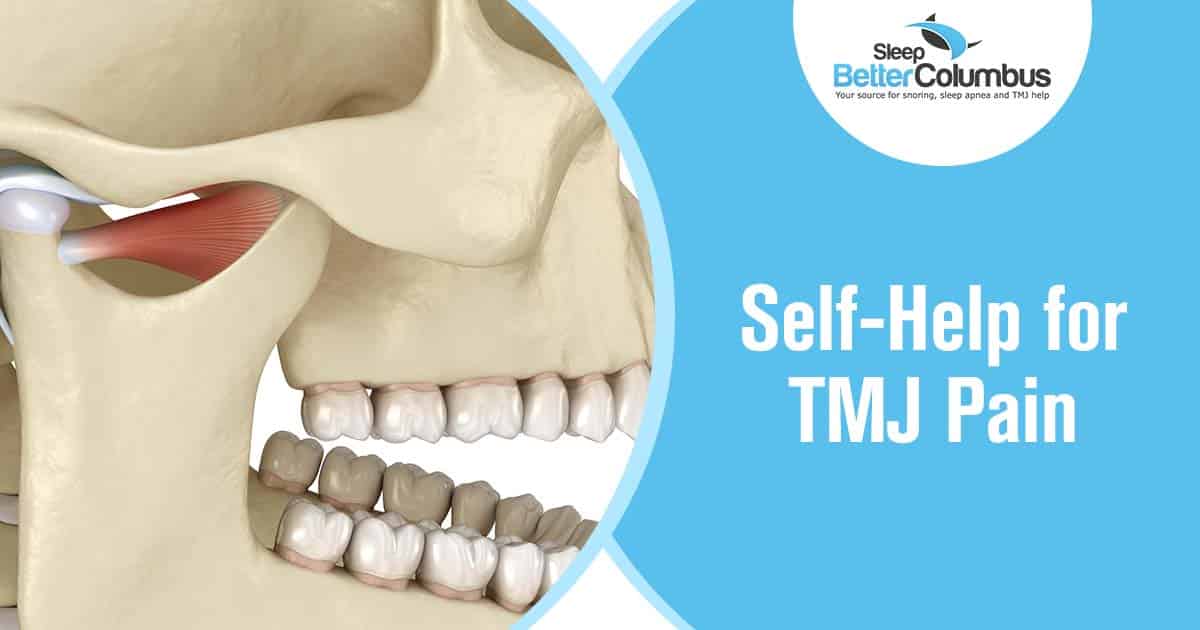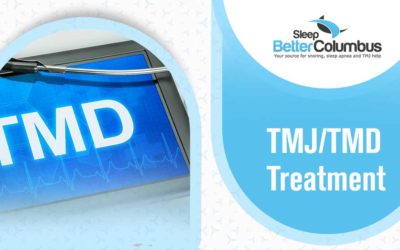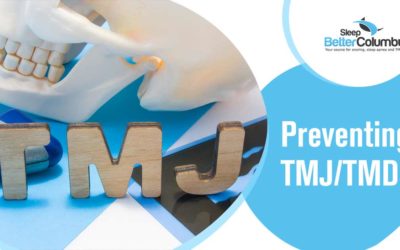Temporomandibular Joint Disorder, or TMD, is a condition that causes a lot of pain and inconvenience for people suffering from it. Apart from orofacial pain, jaw pain, and difficult jaw movements, Temporomandibular Dysfunction can come with earache, migraines, dizziness, and more.
Temporomandibular Joint Pain, or TMJ pain, can be both acute and chronic, but in any case, it can seriously affect the quality of life. If you experience the symptoms of TMD, be sure to make an appointment with your dentist. A neuromuscular dentist can diagnose Temporomandibular Joint Disorder, help you to find adequate treatment and advise you further on remedies.
However, in addition to traditional treatment options, evidence shows that TMD symptoms can be alleviated or eliminated by exercise and a few lifestyle changes.
What is a Temporomandibular Joint Disorder?
The Temporomandibular Joint, or TMJ, is the joint that connects the lower jaw to the skull. Any condition causing pain or discomfort in these joints or the muscles that nest them is included in the term “Temporomandibular Joint Disorder.”
TMD can have a lot of different origins: the grinding of the teeth while awake or asleep, trauma of the jaw, or even stress. Temporomandibular Dysfunction can also come from Rheumatoid Arthritis or calcium and magnesium deficiency. Finding the cause of your Temporomandibular Disorder can be part of your treatment.
The Treatment of the Temporomandibular Joint Disorder
If you suffer from Temporomandibular Disorder, your dentist will recommend treatment options, perhaps even several of them simultaneously. They may prescribe pain relievers and anti-inflammatories to help ease the pain caused by TMJ disorders. For bruxism, they can prescribe tricyclic antidepressants and muscle relaxants.
Physical therapy, including ultrasound treatment or jaw muscle exercises, can ease facial pain and muscle stiffness. An oral appliance, like an oral splint or a mouth guard, prevents teeth grinding and can alleviate jaw pain. Counseling can help you identify and understand the stress factors aggravating your TMD. And, if nothing else helps, there is always surgery as a last resort.
You should also know that there is no underlying evidence that bad bites could develop TMD. Therefore, healthcare providers strictly advise against treatments that permanently change jaw joints, teeth, or bite unless necessary.
Home Remedies and Treatment Options for TMJ Disorders and TMJ Pain
In some cases, Temporomandibular Joint Disorder is only temporary and goes away without significant medical interference. If you experience facial pain or jaw pain, you can try to apply hot or cold packs on the painful area.
You can also try some over-the-counter medications. Non-steroidal anti-inflammatory drugs (NSAIDs) containing ibuprofen, such as Advil or Motrin, can effectively reduce pain.
Relaxation Techniques for Temporomandibular Disorders
While stressed, you often clench your teeth, tense your facial and shoulder muscles or chew on something hard, like a pen or a pencil – some even bite their fingernails. All these can lead to and aggravate temporomandibular disorders. Thankfully, learning to manage stress effectively can help eliminate these bad habits. Not only your jaw joints will be grateful, but better stress management also improves your overall well-being. Yoga and meditation can both be very effective against stress, as well as temporomandibular joint disorder.
You can also try the following exercise to help ease symptoms of Temporomandibular Joint Disorder:
- First, sit in a comfortable chair with a good, neutral posture.
- Now lower your head until your chin is resting comfortably on your chest.
- Interlock your fingers and place your hand gently on the back of your head. Don’t push.
- Now lift your head against the gentle resistance of your hands. Be careful not to push or force your head.
Jaw Exercises for Treating TMJ Pain
Strengthening the muscles around the temporomandibular joint can also effectively relieve pain caused by Temporomandibular Joint Disorder. Here are some exercises to help:
- Sit in a comfortable chair with a good, neutral posture.
- Close your mouth loosely, with your upper and lower teeth touching. Be careful not to clench your jaw!
- Touch your upper teeth with the tip of your tongue.
- Run the tip of your tongue backward on the roof of your mouth to the soft palate, as far as you comfortably can. Keep your teeth together, but do not clench!
- Open your mouth slowly until you feel your tongue leaving your palate.
- Maintain this position for five seconds, then relax.
Do this activity for five minutes two times per day.
The following exercise both relaxes and strengthens your jaw muscles:
- Sit in a comfortable chair with a good, neutral posture.
- Trace your lower jaw joint with your index finger on the right side of your face, and with a downward motion give the muscles a gentle massage.
- Repeat on the left side.
- Open your mouth comfortably and slide the tip of your tongue on your palette from your front teeth to the soft palette. Hold for five seconds.
- Stick your tongue out as far as you can and stretch for five seconds.
You can repeat this exercise 5-10 times per day.
Another effective exercise is opening and closing your mouth with resistance.
- Place your thumbs under your chin and open your jaw applying gentle pressure with the thumbs.
- Place your index fingers on your chin, below your lower lip, and close your mouth applying gentle pressure to the area.
These two motions can be done separately or together in one fluid motion.
When you start exercising, you may experience some pain or soreness that will go away after one or two weeks. If during the exercise some TMD symptoms occur, such as popping or clicking and pain, stop the exercise and start again more carefully.
You can also speak with a TMJ specialist to learn more about these and other exercises.
Lifestyle Changes to Treat Your TMJ Disorder
It is important to find out what aggravates your TMD. For example, it can be foods you eat often, activities you enjoy, or your posture when you sit or stand – and a lot of other things.
Until you find the reason, you can significantly reduce the pain and inconvenience caused by Temporomandibular Dysfunction by applying these few lifestyle changes:
- Avoid chewing gum and try to eat softer food. Try to eat also in smaller mouthfuls, so you don’t have to open your mouth as wide while eating.
- Always keep your lips together and your teeth apart.
- Hold your phone in your hand, not between your ear and shoulder.
- Follow a diet rich in calcium and magnesium or take food supplements.
- Treat stress consciously and reduce bad habits like jaw clenching or teeth grinding.
Temporomandibular Joint Disorder symptoms often ease with these technics, but in any case, make an appointment with a dentist who specializes in TMJ disorders, who can diagnose you and advise additional remedies.




